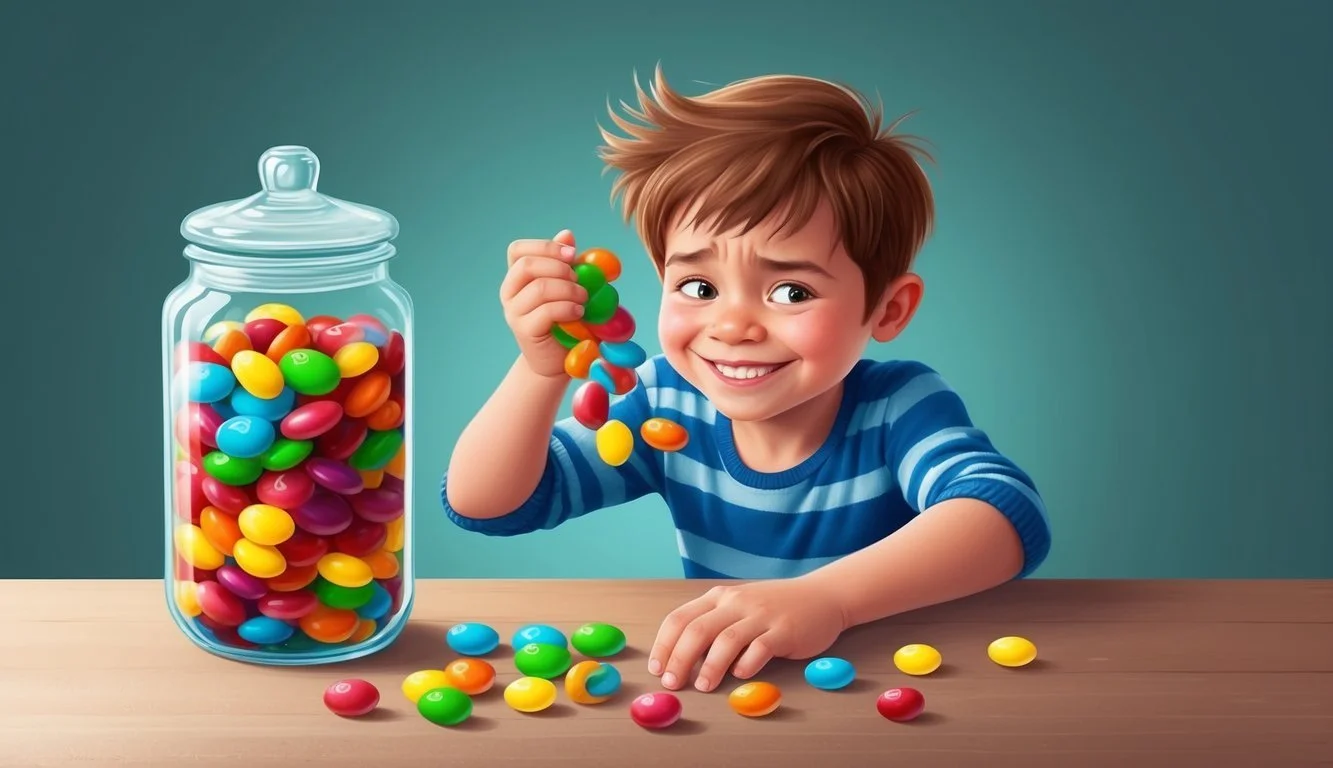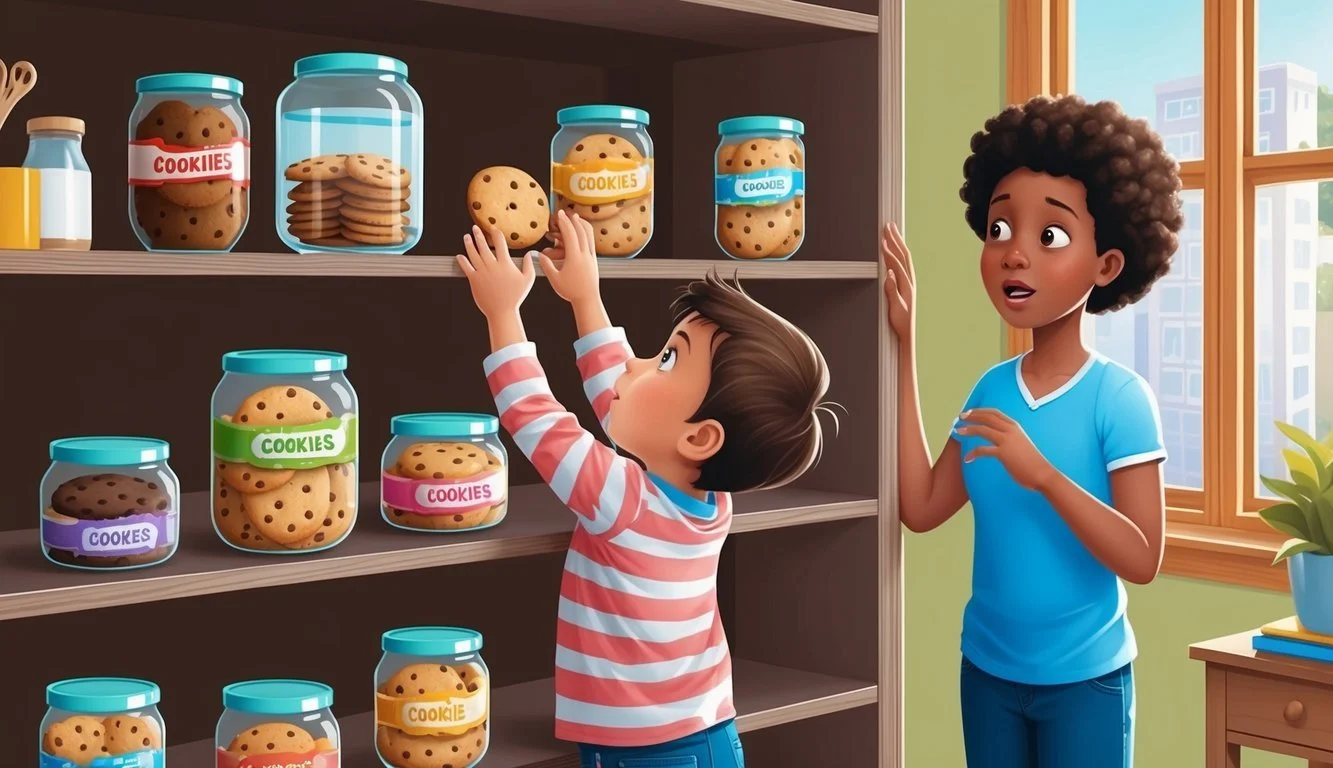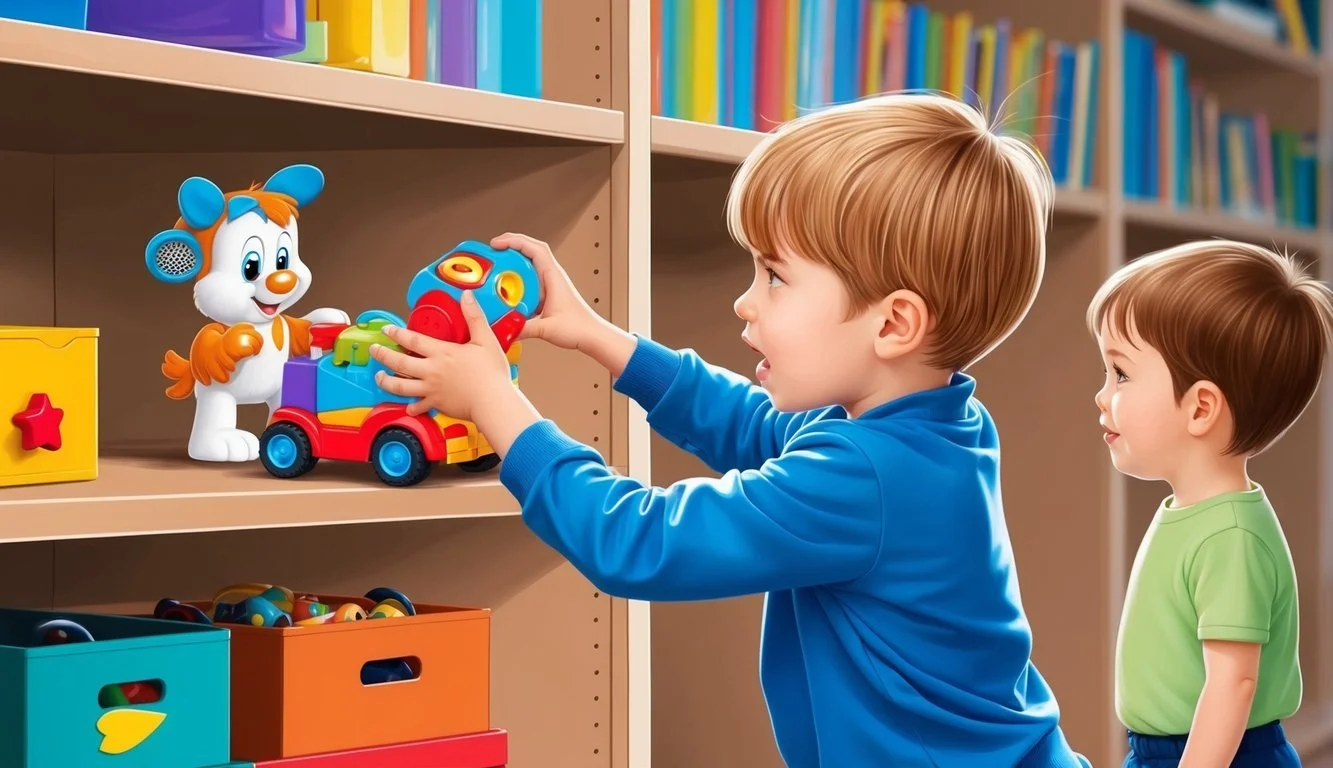Understanding Impulsivity in 5-Year-Olds: Strategies for Parents
Impulsivity in 5-year-olds is a common developmental characteristic. At this age, children are still learning to control their impulses and regulate their behavior. They may act without thinking, struggle to wait their turn, or have difficulty following rules consistently. Impulsive behavior in 5-year-olds often manifests as grabbing toys from others, interrupting conversations, or having trouble sitting still during activities.
Parents and caregivers can help 5-year-olds develop better impulse control through various strategies. Establishing clear rules and routines, providing positive reinforcement for good behavior, and teaching problem-solving skills can all contribute to improved self-regulation. It's important to remember that impulse control develops gradually, and children may need consistent guidance and support to manage their impulses effectively.
While some impulsivity is normal for 5-year-olds, excessive or persistent impulsive behavior may indicate underlying issues. If a child's impulsivity significantly impacts their daily life, relationships, or ability to learn, it may be helpful to consult with a pediatrician or child development specialist for further evaluation and support.
Understanding Impulsivity in Children
Impulsivity in children manifests as acting without thinking and difficulty controlling immediate reactions. It's a common developmental challenge that impacts behavior and social interactions.
Defining Impulsivity
Impulsivity refers to quick, unplanned actions without considering potential consequences. In children, this may look like interrupting conversations, grabbing toys from others, or having trouble waiting their turn.
Impulsive behaviors often stem from underdeveloped self-control and executive functioning skills. These skills help regulate emotions, plan ahead, and resist immediate urges.
Children with impulsivity may struggle to follow rules or instructions, especially in structured settings like school. They might also engage in risky behaviors without thinking about safety.
Developmental Milestones and Impulsivity
Impulse control develops gradually as children grow. At age 5, most children are still learning to manage their impulses.
Typical 5-year-olds can usually:
Wait for short periods
Follow simple rules
Take turns in games
Show some self-control in exciting situations
However, they may still act impulsively at times. This is normal and part of their developmental process.
By age 7-8, children generally exhibit better impulse control. They can typically wait longer, think before acting, and consider consequences more often.
It's important to note that individual children develop at different rates. Some may struggle with impulsivity longer than others.
Factors Contributing to Impulsivity
Impulsivity in 5-year-olds arises from multiple interrelated factors. These elements shape a child's ability to control their impulses and make thoughtful decisions.
The Role of Brain Development
Brain development plays a crucial role in impulse control. At age 5, the prefrontal cortex - responsible for decision-making and self-regulation - is still maturing. This ongoing development can lead to difficulties in inhibiting impulsive behaviors.
Neurotransmitters like dopamine and serotonin also influence impulsivity. Imbalances in these brain chemicals may contribute to more impulsive actions.
Executive functions, including working memory and attention control, are still developing in 5-year-olds. These skills are essential for managing impulses and considering consequences before acting.
Environmental Influences
A child's environment significantly impacts their impulsive tendencies. Inconsistent discipline or lack of clear boundaries can make it harder for children to develop self-control.
Exposure to impulsive behavior models, such as family members or peers, may increase a child's likelihood of acting impulsively.
Stress and trauma can affect a child's ability to regulate emotions and impulses. High-stress environments may lead to more impulsive reactions as a coping mechanism.
Overstimulating settings with too many choices or distractions can overwhelm a 5-year-old's developing impulse control abilities.
Temperament and Personality
Individual temperament plays a significant role in impulsivity. Some children are naturally more prone to act on impulses due to their innate personality traits.
High levels of energy or activity can contribute to impulsive behavior in 5-year-olds. These children may struggle to pause and think before acting.
Sensitivity to stimuli can influence impulsivity. Highly sensitive children might react quickly to environmental triggers, appearing more impulsive.
Risk-taking tendencies, which vary among individuals, can affect impulsive behavior. Children who enjoy novelty and excitement may be more prone to act without considering consequences.
Recognizing Impulsive Behaviors
Impulsive behaviors in 5-year-olds can manifest in various ways. Identifying these actions helps parents and caregivers distinguish between typical age-appropriate conduct and potential concerns that may require attention.
Common Impulsive Actions in 5-Year-Olds
Five-year-olds often display impulsivity through physical actions and verbal outbursts. They may grab toys from other children without asking or interrupt conversations. Some 5-year-olds have difficulty waiting their turn in games or activities.
Shouting out answers in class before being called on is another common impulsive behavior. Emotional reactions like sudden tears or laughter can occur without apparent cause. Many 5-year-olds struggle to sit still for extended periods, fidgeting or leaving their seats frequently.
Impulsive touching of objects or people, even when told not to, is also typical. Some children this age may act without considering consequences, such as running into the street or climbing dangerous structures.
Differentiating Between Impulsivity and Misbehavior
Distinguishing impulsive actions from deliberate misbehavior can be challenging. Impulsivity often stems from a lack of self-control rather than intentional defiance. 5-year-olds with impulsive tendencies may show remorse immediately after acting out.
Consistency is key in identifying impulsive behaviors. If a child repeatedly engages in certain actions despite consequences, it may indicate impulsivity rather than misbehavior. Impulsive children often struggle to explain their actions when questioned.
Age-appropriate expectations are crucial. While grabbing toys might be typical for a 3-year-old, a 5-year-old is expected to have developed more self-control. Context also matters - a child who acts impulsively only in specific situations may be reacting to environmental factors rather than exhibiting a broader impulsivity issue.
Strategies for Managing Impulsivity
Addressing impulsivity in 5-year-olds requires a multi-faceted approach. Key strategies focus on clear communication, targeted interventions, and environmental structure to support the child's developing self-control.
Effective Communication Techniques
Clear, concise instructions help impulsive children understand expectations. Use simple language and break tasks into small steps. Visual aids like pictures or charts can reinforce verbal directions.
Praise specific behaviors to encourage self-control:
"Great job waiting your turn!"
"I like how you stopped and thought before acting."
Active listening shows children their thoughts matter. Reflect their feelings: "You seem frustrated. Let's find a solution together." This builds trust and encourages open dialogue.
Avoid lengthy explanations that may overwhelm a 5-year-old. Instead, offer brief, concrete reasons for rules or requests. Model calm communication, even when frustrated.
Behavioral Interventions and Support
Consistent positive reinforcement encourages desired behaviors. Create a reward system using stickers or points for demonstrating self-control. Gradually increase the challenge as the child improves.
Teach coping strategies:
Deep breathing exercises
Counting to ten before acting
Using "self-talk" phrases like "I can wait"
Role-play scenarios to practice impulse control in a safe environment. This allows children to develop and rehearse appropriate responses.
Identify triggers that lead to impulsive behavior. Work with the child to create a plan for managing difficult situations. This might include finding a quiet space or asking for help.
Physical activity can help burn excess energy. Incorporate regular movement breaks throughout the day.
Creating a Structured Environment
Establish clear routines for daily activities. Use visual schedules to help children understand what comes next. This predictability reduces anxiety and impulsive reactions.
Organize the physical space to minimize distractions:
Designate specific areas for different activities
Store toys and materials in labeled containers
Create a quiet corner for calming down
Set clear, age-appropriate rules and consistently enforce them. Post rules in visible locations as reminders. Keep rules positive: "Walk inside" instead of "No running."
Provide choices within boundaries to give children a sense of control. "Would you like to put on your shoes or jacket first?" This reduces power struggles and impulsive defiance.
Anticipate transitions and give advance warnings. Use timers or countdown methods to help children prepare for changes in activities.
Parental Guidance and Support
Parents play a crucial role in helping their 5-year-old manage impulsivity. By establishing clear guidelines, offering positive reinforcement, and nurturing emotional skills, caregivers can foster self-control and thoughtful behavior in their children.
Setting Consistent Rules and Expectations
Clear boundaries help 5-year-olds understand acceptable behavior. Establish simple, age-appropriate rules and communicate them clearly. Use visual aids like charts or pictures to reinforce expectations.
Consistently enforce consequences for breaking rules. This helps children learn cause-and-effect relationships between their actions and outcomes.
Involve your child in creating some rules. This ownership can increase their motivation to follow them. Be patient and remember that learning self-control takes time.
Praise your child when they follow rules or show restraint. This positive attention reinforces good behavior and encourages repetition.
The Importance of Positive Reinforcement
Catch your child being good and acknowledge it immediately. Specific praise like "Great job waiting your turn!" is more effective than general comments.
Use a reward system for good behavior. Sticker charts or token economies can motivate children to practice self-control. Gradually reduce external rewards as internal motivation develops.
Avoid punishing impulsive behavior harshly. Instead, calmly explain why the behavior is inappropriate and guide them towards better choices.
Model the behavior you want to see. Children learn by example, so demonstrate patience and self-control in your own actions.
Building Emotional Regulation Skills
Teach your child to identify and name their emotions. Use books, games, or emotion charts to expand their emotional vocabulary.
Practice calming techniques together, such as deep breathing or counting to ten. Make these exercises fun and engaging for young children.
Role-play scenarios that trigger impulsive behavior. This allows children to practice self-control in a safe environment.
Encourage your child to verbalize their feelings and needs instead of acting out. Offer alternative phrases or actions they can use when feeling frustrated or angry.
Create a "calm down corner" with soothing items like stuffed animals or stress balls. Teach your child to use this space when they need to regain control.
When to Seek Professional Help
Recognizing when a 5-year-old's impulsive behavior requires professional intervention is crucial for their development. Parents should be aware of key signs and available assessment options.
Identifying Red Flags
Persistent disruptive behavior in multiple settings can indicate a need for professional help. This may include frequent outbursts at home and school, difficulty following instructions, and problems with peer relationships. Physical aggression, such as hitting or biting, that continues despite consistent discipline is another concern.
Impulsivity that interferes with learning or daily routines should be addressed. Examples include inability to sit still during activities, constantly interrupting others, or acting without thinking of consequences.
Sleep disturbances, extreme mood swings, or sudden changes in behavior patterns may also warrant professional evaluation. Parents should trust their instincts if they feel their child's impulsivity is beyond typical developmental expectations.
Approaches to Professional Assessment
Pediatricians often serve as the first point of contact for assessing impulsive behavior. They can conduct initial screenings and refer to specialists if needed. Child psychologists or psychiatrists may perform comprehensive evaluations using standardized tests and observational techniques.
These assessments typically involve:
Interviews with parents and teachers
Behavioral rating scales
Cognitive and academic testing
Observations of the child in different settings
Neuropsychological testing may be recommended to assess attention, memory, and executive functioning. Some professionals use computer-based tests to measure impulse control and attention span.
It's important to choose a professional experienced in working with young children. They should use age-appropriate methods and consider the child's overall development.
Therapies and Interventions
Cognitive-behavioral therapy (CBT) is often effective for impulsive 5-year-olds. It helps children recognize triggers and develop coping strategies. Play therapy can be particularly useful at this age, allowing children to express themselves in a natural setting.
Parent training programs teach techniques to manage impulsive behavior at home. These may include:
Consistent discipline strategies
Positive reinforcement methods
Creating structured routines
In some cases, occupational therapy can help with sensory processing issues that contribute to impulsivity. Social skills groups provide opportunities for children to practice impulse control in peer settings.
Medication is rarely the first option for 5-year-olds but may be considered in severe cases. This decision should be made carefully under the guidance of a child psychiatrist.
Long-Term Outlook
Impulsivity in 5-year-olds can impact future behaviors and outcomes. With proper support and strategies, children can develop self-control and achieve lifelong success.
Impulsivity and Future Behavioral Outcomes
Impulsivity at age 5 may persist into adolescence and adulthood if not addressed early. Children with impulsive tendencies are at higher risk for academic challenges, social difficulties, and risky behaviors later in life.
Early intervention is crucial. Studies show that children who receive support and guidance in managing impulsivity often show significant improvements over time.
Some impulsive behaviors may naturally decrease as a child's brain develops. However, without proper support, impulsivity can lead to more serious issues like substance abuse or behavioral problems in adolescence.
Supporting Lifelong Success
Consistent behavioral strategies and positive reinforcement can help impulsive children develop self-control. Parents and caregivers play a vital role in this process.
Encouraging activities that promote focus and patience, such as puzzles or board games, can enhance impulse control skills. Regular physical activity also helps channel excess energy positively.
Teaching problem-solving and decision-making skills empowers children to think before acting. Role-playing scenarios can help practice these skills in a safe environment.
Collaboration between parents, teachers, and healthcare providers ensures a comprehensive approach to supporting the child's development. This team effort can lead to improved outcomes across various aspects of life.






